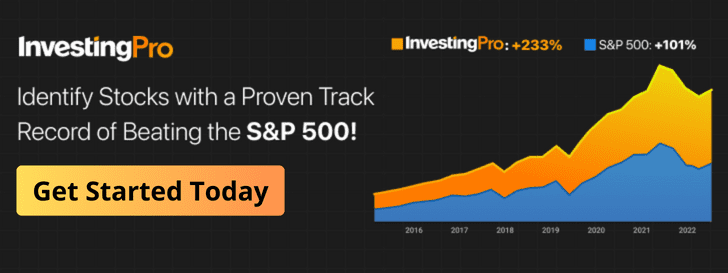What is the Weighted Average Cost of Capital?
The weighted average cost of capital (WACC) is a measure of the average rate of return that a company is expected to pay to its investors to finance its assets. The WACC takes into account the relative weights of each component of the company’s capital structure, such as debt and equity, to calculate the average cost of capital for the company as a whole. The WACC is used as a discount rate to determine the present value of future cash flows in discounted cash flow analysis. In general, a company’s WACC is typically considered to be the minimum required return that investors expect to receive for providing capital to the company.
What is the WACC formula?
WACC = (E/V) * Re + ((D/V) * Rd) * (1 – T)
where:
- E is the market value of the company’s equity
- V is the market value of the company’s capital structure (the sum of its equity and debt)
- Re is the cost of equity
- D is the market value of the company’s debt
- Rd is the cost of debt
- T is the company’s effective tax rate
This formula calculates a weighted average by factoring in the proportions of equity and debt in the capital structure and their respective costs.

How to calculate WACC?
To calculate a company’s weighted average cost of capital, you need to first determine the weights of each component of the company’s capital structure, such as its debt and equity. The weight of each component is determined by dividing the value of that component by the total value of the company’s capital structure.
Once you have determined the weights of each component, you need to calculate the cost of each component. The cost of debt is typically the interest rate that the company pays on its borrowings, while the cost of equity is the return that investors expect to receive for providing capital to the company.
Once you have determined the weights and costs of each component, you can calculate the company’s WACC by multiplying the weight of each component by its cost, and then summing these values to get the overall WACC for the company.
Example Calculation of Weighted Average Cost of Capital
Consider a company with the following details:
- Equity (E): $500 million
- Debt (D): $300 million
- Cost of Equity (Re): 8%
- Cost of Debt (Rd): 5%
- Corporate Tax Rate (Tc): 30%
First, calculate the total value of capital (V):
V = E + D
V = 500 + 300 = 800 million
Now, calculate WACC:
WACC = (500 / 800 × 0.08) + (300 / 800 × 0.05 × (1 − 0.3))
WACC = (0.625 × 0.08) + (0.375 × 0.05 × 0.7)
WACC = 0.05 + 0.013125 = 0.063125 or 6.31%
The company’s WACC is 6.31%, meaning it needs to generate returns above this rate to create value.
Why is WACC Important?
WACC is a vital tool for evaluating investment decisions, financial performance, and the feasibility of new projects. It serves as a benchmark against which companies assess their ability to generate returns that exceed the cost of their capital.
It’s a cornerstone metric in financial analysis. Here are five reasons why it’s crucial:
- Evaluates Investment Decisions: WACC helps assess whether new projects or investments are worth pursuing. A project must generate returns higher than the WACC to be considered value-accretive.
- Determines Valuation: WACC is used as the discount rate in discounted cash flow (DCF) models to calculate a company’s intrinsic value, making it indispensable for valuation.
- Measures Financial Efficiency: By balancing debt and equity costs, WACC reflects a company’s ability to finance itself efficiently. Lower WACC often indicates strong financial health.
- Aids Capital Structure Optimization: Companies can use WACC to evaluate different financing options and find the optimal mix of debt and equity to minimize costs.
- Provides Benchmark for Performance: WACC serves as a benchmark for assessing whether a company’s return on invested capital (ROIC) exceeds its cost of capital, indicating value creation.
How to Interpret Weighted Average Cost of Capital?
Understanding WACC requires considering several factors:
High WACC
A high WACC suggests that a company’s financing is costly, which might deter investment. This could be due to high-risk operations or reliance on expensive equity funding.
Low WACC
A low WACC indicates cheaper financing, often signaling financial stability and investor confidence. It can provide a competitive advantage in capital-intensive industries.
Industry Context
WACC varies across industries. For instance, tech companies may have higher WACC due to risk, while utilities often have lower WACC due to stable revenues.
What is a good WACC?
There is no fixed value that can be considered a “good” weighted average cost of capital (WACC) for a company, as the appropriate WACC will depend on a variety of factors, such as the industry in which the company operates, its capital structure, and the level of risk associated with its operations and investments.
In general, a lower WACC is generally considered to be better, as it indicates that a company is able to raise capital at a lower cost and therefore has a higher potential for profitability. However, a company with a very low WACC may also be seen as less creditworthy or more risky, which could make it more difficult for the company to raise capital in the future.
A “good” WACC varies by industry, company size, and market conditions. Here’s what to consider:
- Industry Standards: Companies in stable industries like utilities often have lower WACC (e.g., 4-6%), while tech firms or startups may have higher WACC (e.g., 10-15%).
- Growth Stage: Startups might have high WACC due to perceived risk, while mature firms typically achieve lower WACC due to stable cash flows and creditworthiness.
- Cost Efficiency: A WACC below 10% is generally favorable for most companies, reflecting efficient capital management and lower perceived risk.
What is ‘Beta’ in WACC?
In the context of the weighted average cost of capital (WACC), beta is a measure of a company’s systematic risk, or the risk inherent in the overall market or economy. Beta is calculated by comparing the returns of a company’s stock to the returns of the overall market. A beta of 1 indicates that the company’s stock has the same level of systematic risk as the market, while a beta greater than 1 indicates that the company’s stock has higher systematic risk than the market, and a beta less than 1 indicates that the company’s stock has lower systematic risk than the market.
The use of beta in the calculation of the WACC is based on the capital asset pricing model (CAPM), which states that the expected return on a security is equal to the risk-free rate plus a risk premium that is proportional to the security’s beta. In other words, the higher a company’s beta, the higher the risk premium that investors will require in order to compensate them for the additional risk associated with the company’s stock. This risk premium is reflected in the company’s cost of equity, which is used in the calculation of the WACC.
In general, a higher beta will result in a higher WACC for a company, as investors will require a higher return to compensate them for the additional risk associated with the company’s stock. However, it is important to note that beta is just one factor that can affect a company’s WACC, and other factors, such as the company’s capital structure and the overall level of risk in the market, can also have a significant impact on the WACC.
WACC vs. Required Rate of Return (RRR)
The weighted average cost of capital (WACC) and the required rate of return (RRR) are both measures of the rate of return that investors expect to receive for providing capital to a company. However, there are some key differences between these two measures:
The WACC is the average rate of return that a company is expected to pay to its investors to finance its assets, while the RRR is the minimum rate of return that investors require to invest in a particular project or security.
The WACC takes into account the relative weights of different components of the company’s capital structure, such as debt and equity, to calculate the overall cost of capital for the company, while the RRR is typically based on the specific risks and opportunities associated with a particular project or security.
The WACC is used as a discount rate to determine the present value of future cash flows in discounted cash flow analysis, while the RRR is used to compare the expected return on an investment to the required rate of return to determine whether the investment is viable.
Overall, while the WACC and the RRR both measure the rate of return that investors expect to receive for providing capital to a company, the WACC is a more general measure that reflects the overall cost of capital for the company, while the RRR is a more specific measure that is used to evaluate the viability of individual investments.
Limitations of WACC
While WACC is a powerful metric, it has notable limitations. Here are five key drawbacks:
- Assumes Constant Capital Structure: WACC assumes a fixed capital structure, which may not reflect real-world dynamics, especially for companies actively raising funds or repaying debt.
- Depends on Market Estimates: Inputs like cost of equity rely on market-based models (e.g., CAPM), which are sensitive to assumptions about risk-free rates and market risk premiums.
- Ignores Non-Financial Risks: WACC focuses solely on financial costs, overlooking operational risks, market dynamics, and other qualitative factors that impact a company’s performance.
- Subject to Tax Rate Variability: Changes in corporate tax rates can significantly affect WACC, making it less reliable in volatile tax environments.
- Challenges in Estimating Cost of Equity: Determining cost of equity is complex and subject to debate, as it depends on factors like beta, which may not always be precise or universally agreed upon.
How to Find WACC?
InvestingPro offers detailed insights into companies’ Weighted Average Cost of Capital including sector benchmarks and competitor analysis.

InvestingPro+: Access WACC Data Instantly
Unlock Premium Data With InvestingPro 📈💸
Gain instant access to WACC data within the InvestingPro platform. Plus:
✓ Access to 1200+ additional fundamental metrics
✓ Competitor comparison tools
✓ Evaluate stocks with 14+ proven financial models
WACC FAQs
What does WACC stand for?
WACC stands for Weighted Average Cost of Capital, a metric that calculates the average cost of a company’s debt and equity financing.
How is WACC used in valuation?
WACC serves as the discount rate in discounted cash flow (DCF) models, helping calculate the present value of future cash flows.
Can WACC be negative?
No, WACC cannot be negative, as it represents a cost. However, extremely low costs of debt and equity might result in a near-zero WACC.
Why does WACC vary by industry?
WACC reflects industry-specific risks, capital structures, and financing needs. For example, high-risk sectors like tech often have higher WACC than stable industries like utilities.
Is WACC the same as ROI?
No, WACC measures the cost of capital, while ROI (Return on Investment) assesses profitability. A company’s ROI must exceed its WACC to create value.









